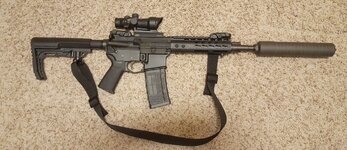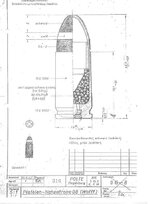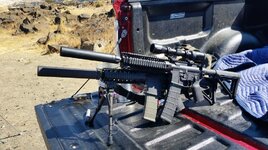Bronze Supporter
- Messages
- 1,249
- Reactions
- 972
So I've been trying to find the bottom end on this 300 blackout subsonic load. Using published data for starting point (high end) which is different than my standard Low End rule..
Have loaded the following components:
208 grain Hornady HPBT
CCI Military small rifle primer
Accurate 1680
Reprocessed 300 Brass from multiple headstamps
9" SBR with Saker 762 Mounted ON (except typically the first round to make sure I'm not keyholing)
Started with somewhere above 12 grains
Made 3 of each in .3 to .4 grain increments
So.... And I'm not going to list all the numbers below that I chrono'd. Just the last few for effect.
12.0
11.7
11.4
11.1
10.8
10.4 940-960
10.1 = 910-940
9.6gr. Not Chrono'd yet but cycles and Bolt stays open on last round..
Am I missing something important? I have not seen anybody online indicate such low powder charges for this weight and powder... Possible that people only go as low as they can load with the suppressor BEING OFF the firearm so that they know they can fire reliably Minus the suppressor?
And it's still louder that I was hoping for
Have loaded the following components:
208 grain Hornady HPBT
CCI Military small rifle primer
Accurate 1680
Reprocessed 300 Brass from multiple headstamps
9" SBR with Saker 762 Mounted ON (except typically the first round to make sure I'm not keyholing)
Started with somewhere above 12 grains
Made 3 of each in .3 to .4 grain increments
So.... And I'm not going to list all the numbers below that I chrono'd. Just the last few for effect.
12.0
11.7
11.4
11.1
10.8
10.4 940-960
10.1 = 910-940
9.6gr. Not Chrono'd yet but cycles and Bolt stays open on last round..
Am I missing something important? I have not seen anybody online indicate such low powder charges for this weight and powder... Possible that people only go as low as they can load with the suppressor BEING OFF the firearm so that they know they can fire reliably Minus the suppressor?
And it's still louder that I was hoping for















